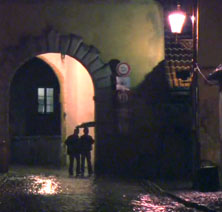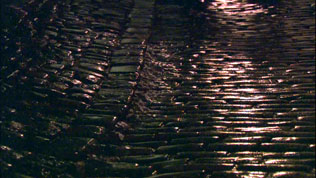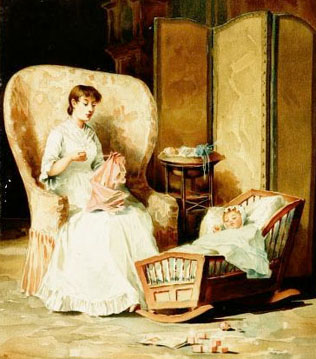 Play
Play



This cinematic passage from the second movement of the Seventh Symphony starts with a passage of woodwind solos, built from stylized versions of bird calls. Imagine how the approach of the night watch (in tuba and bassoon) agitates a flock of birds at night: they noisily take flight and scatter; then all is quiet again.

In the second “Night Music” of the Seventh Symphony, Mahler brings mandolin and guitar into the ensemble, marrying the unmistakable sound of a lover’s serenade to the symphony orchestra. Like sparkles of moonlight on a dark surface, these plucked sounds stand out against the otherwise dark colors employed in this movement.

The rocking motion of a lullaby, a cradle song, is the ironic background to a father’s remembering his daughter in "When Your Mother Comes Through the Door" (Wenn dein Mütterlein) from the Songs on the Deaths of Children (Kindertotenlieder): "When your mother comes through the door with the shimmering candle, it seems to me you always come in with her, scurrying behind just as before, into the room. Oh you, the too quickly, too quickly extinguished happy glow of your father's cell!"
Privacy Policy | Terms of Use | SFSymphony.org | SFSkids.org | Contact Us
© 2011 San Francisco Symphony. All rights reserved. Keeping Score® is a registered trademark of the San Francisco Symphony.